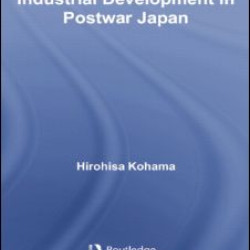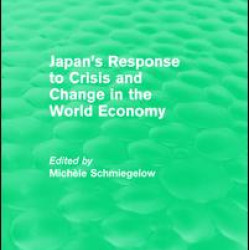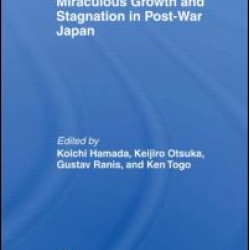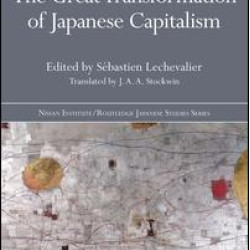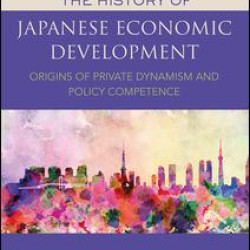Japanese Economics
Brand: Taylor & Francis
Model: Stock
This book is suitable for all those who want to understand the role and performance of Japan's central and local fiscal relations as an integral part of resource allocation, stabilization and redistribution function of the public sector since the post bubble economy...
₹2,643.10 ₹3,303.88
Brand: Taylor & Francis
Model: Stock
Structured into sub-sector by sub-sector analyses and written by an authority in the area, this book provides a clear and accessible examination of industrial development, without over-generalizing or being weighed down by historical details...
₹3,083.74 ₹3,854.68
Brand: Taylor & Francis
Model: 9780415511667
Analyzing recent changes in important Japanese institutions, this book goes against the conventional wisdom that Japanese institutions have remained relatively rigid since the collapse of the 1980s bubble, to argue that there has in fact been significant institutional change over the last decade. _..
₹2,643.10 ₹3,303.88
Brand: Taylor & Francis
Model: Stock
Originally published in 1986, after a period of global changes and financial crisis in the majority of industrialised countries, this book explores how Japan’s economy seemed to maintain its success. This title will be of interest to students of Asian Studies and Economics...
₹2,202.46 ₹2,753.08
Brand: Taylor & Francis
Model: Stock
This fully revised and updated third edition of Japanese Economic Development looks at Japan's economic history from the nineteenth century through to World War II, reassessing Japan’s economic past in the light of fresh theoretical perspectives in economic history and development. Francks draws out..
₹8,445.60 ₹10,557.00
Brand: Taylor & Francis
Model: Stock
Sixty-five years have passed since the end of World War II. It is timely to reflect upon this short but curious Japanese economic history, beginning with the extreme hunger and poverty in the late 1940s, followed by quick recovery and "miraculous" growth since the late 1950s, to the first oil shock ..
₹2,643.10 ₹3,303.88
Brand: Taylor & Francis
Model: Stock
This book examines the impact the 1993 general election had on Japanese politics...
₹2,643.10 ₹3,303.88
Brand: Taylor & Francis
Model: Stock
Through an historical institutionalist lens, this book examines the reasons why the key features of the Japanese developmental state, such as pilot agencies and industrial associations, continued to play key roles in the post-war Japanese economy. Further, it locates the fundamental roots of the dev..
₹2,643.10 ₹3,303.88
Brand: Taylor & Francis
Model: Stock
This book presents a comprehensive analysis of the great transformation of Japanese capitalism from the heights of the 1980s, through the lost decades of the 1990s, and well into the 21st century. It posits an alternative analysis of the Japanese economic trajectory since the early 1980s, and argues..
₹2,643.10 ₹3,303.88
Brand: Taylor & Francis
Model: Stock
This is an easy-to-read book that explains how and why Japan industrialized rapidly. It traces historical development from the feudal Edo period to high income and technology in the current period. Catch-up industrialization is analyzed from a broad perspective including social, economic and politic..
₹2,716.54 ₹3,395.68



